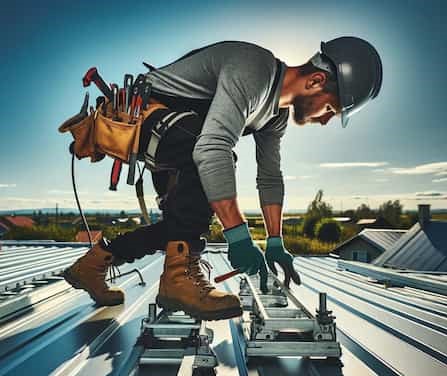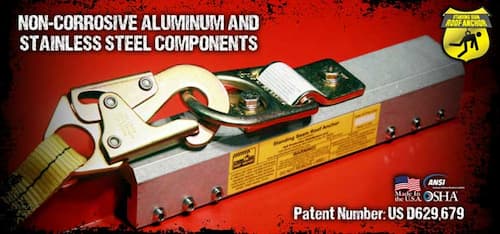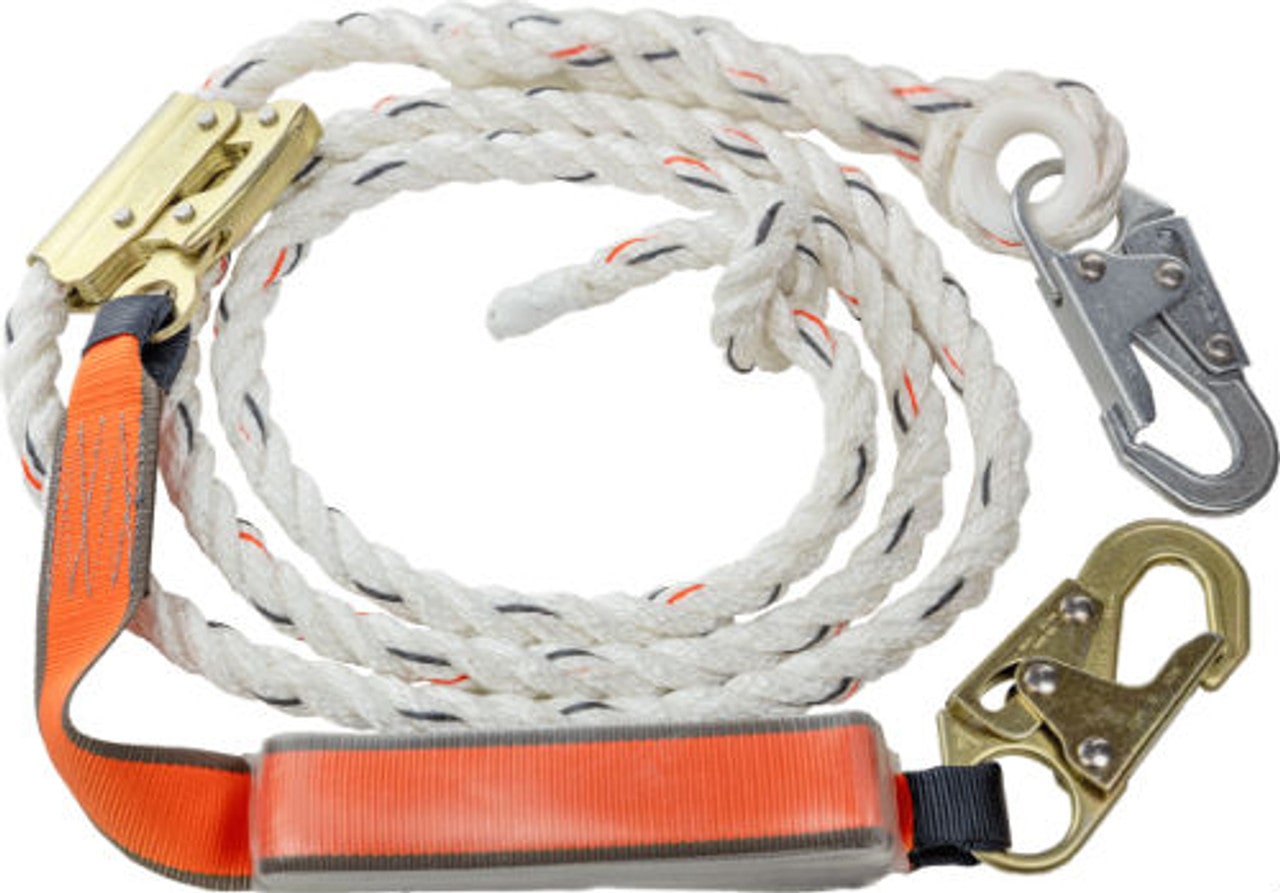Fall Protection Q&A For Contractors
Posted by Howie Scarboro - CEO Fall Protection Distributors, LLC on Feb 22nd 2024
Fall Protection Q&A
Welcome to our comprehensive guide on fall protection, where we unravel the intricacies of workplace safety regulations, equipment, and roles essential for safeguarding workers at elevated heights. In today's dynamic work environments, understanding the nuances of fall protection is paramount to ensure compliance with Occupational Safety and Health Administration ( OSHA) standards and mitigate the risks associated with falls.
From discerning between fall arrest and fall restraint systems to elucidating the roles of Competent Persons and Qualified Persons, we delve deep into the intricacies of fall protection to equip you with the knowledge needed to foster a safer workplace environment. Whether you're a safety manager, construction supervisor, or an individual seeking to enhance your understanding of fall protection, this blog serves as your ultimate resource.
Join us as we explore common questions surrounding fall protection, including the height requirements for fall protection, the components of a personal fall arrest system, and the critical distinctions between various safety measures. With insights derived from extensive research and expertise, we aim to empower you with actionable information to enhance workplace safety and compliance.
Stay tuned as we unravel the complexities of fall protection, demystify industry terminology, and provide practical guidance on implementing effective safety measures. Let's embark on this journey together to prioritize safety, protect lives, and create a culture of proactive risk management in the workplace.

Question 1: When is Fall Protection Required Based on Height?
Fall protection regulations, particularly those outlined by the Occupational Safety and Health Administration ( OSHA), play a pivotal role in ensuring worker safety across various industries. Understanding the specific height thresholds where fall protection is mandated is essential for employers and employees alike.
In general industries, OSHA 1926.501 stipulates that fall protection equipment must be utilized when workers are operating at heights of 4 feet or higher above a lower level. This includes situations where employees may be working on platforms, scaffolding, or elevated surfaces.
However, OSHA's guidelines become more stringent in certain sectors, such as construction. For construction activities, fall protection is required when working at heights exceeding 6 feet. This encompasses tasks like roofing, framing, and installation work where workers are frequently exposed to elevated environments.

Moreover, OSHA emphasizes the importance of utilizing appropriate fall protection systems, which may include guardrails, safety nets, personal fall arrest systems (PFAS), or positioning device systems. These systems are designed to prevent or arrest falls, minimizing the risk of serious injuries or fatalities.
It's crucial for employers to not only provide the necessary fall protection equipment but also to ensure proper training for workers on its usage and maintenance. Additionally, regular inspections of fall protection systems are imperative to identify any potential hazards or defects that could compromise safety.
Failure to comply with OSHA's fall protection regulations can result in severe consequences, including hefty fines and penalties. Therefore, employers must prioritize workplace safety and adhere to all relevant guidelines to protect the well-being of their employees.
By staying informed about OSHA's height requirements for fall protection and implementing appropriate safety measures, employers can create a safer work environment and mitigate the risks associated with falls. Regular updates and training sessions on fall protection protocols further reinforce a culture of safety within the workplace, fostering a healthier and more productive workforce.
Question 2: What is the Difference Between Fall Arrest and Fall Restraint?
Distinguishing between fall arrest and fall restraint systems is essential for maintaining workplace safety and choosing the appropriate protective measures for workers. While these systems may seem similar at first glance, they serve distinct purposes and operate differently to mitigate the risks of falls.
Fall Arrest Systems:
A fall arrest system is designed to minimize the impact of a fall should it occur. These systems allow a worker to fall, but their primary function is to reduce the distance of the fall and safely arrest the faller's descent. By utilizing components such as harnesses, lanyards, and anchor points, fall arrest systems prevent the individual from making contact with lower surfaces, thus minimizing the potential for serious injury or fatality. This topic is discussed at length on a recent article titled " Arrest vs. Restraint".
Fall Restraint Systems:
In contrast, fall restraint systems are proactive measures intended to prevent falls from happening altogether. These systems utilize tie-off mechanisms that restrict workers' movements, preventing them from reaching hazardous edges, falling over them, or sliding off surfaces. By effectively limiting the worker's range of motion, fall restraint systems eliminate the possibility of a fall occurring in the first place, thereby minimizing the associated risks.
Choosing the Right System:
Selecting the appropriate fall protection system depends on various factors, including the specific work environment, tasks being performed, and available space. Assessing these factors can help determine whether a fall arrest or fall restraint system is more suitable for the situation at hand. Additionally, considering other variables such as regulatory requirements and industry best practices is crucial for ensuring compliance and maximizing worker safety.
In conclusion, while fall arrest systems focus on mitigating the consequences of a fall, fall restraint systems aim to prevent falls from happening altogether. Understanding the distinction between these systems and selecting the right one based on the unique circumstances of each work scenario is paramount for safeguarding workers and maintaining a secure work environment.
Question 3: What are the Components of a Personal Fall Arrest System (PFAS)?
Understanding the key components of a personal fall arrest system (PFAS) is vital for ensuring the safety of workers operating at elevated heights. Comprising essential elements, a PFAS is meticulously designed to arrest falls and minimize the risk of serious injuries or fatalities. Let's delve into the three primary components of a PFAS and their respective functions:
1. Anchor:
The anchor serves as the foundational piece of the PFAS, providing a secure attachment point for the system. It is typically a sturdy structure or device to which the worker connects while performing tasks at elevation. Anchors must be capable of withstanding the forces generated during a fall to ensure the effectiveness of the entire fall arrest system. There are numerous types of fall protection anchors depending on the work being performed and the structure that the anchor is being attached to.

Standing seam roofs require specialized anchors that are capable of supporting full impact loads without penetrating the seams. One of the most popular type is the Standing Seam Roof Anchor SSRA1. It is the strongest and lightest of those available and one of the few that can also support walkboards and horizontal lifelines on standing seam roof systems.
2. Bodywear:
The bodywear component of a PFAS consists of a full-body harness worn by the worker. This harness distributes the forces of a fall across the body, reducing the risk of injury. Properly fitted and adjusted bodywear ensures that the forces exerted during a fall are distributed evenly, enhancing the wearer's safety and comfort throughout their work activities.
3. Connectors:
Connectors play a crucial role in bridging the gap between the user's harness and the anchorage point. These components, which may include lanyards or lifelines, are responsible for securing the worker to the anchor and facilitating movement while maintaining fall protection. It is imperative to select connectors that are compatible with both the harness and the anchor to ensure a secure connection and optimal performance of the PFAS.
A good option is the Malta Dynamics C7050 vertical lifeline with 50' of rope, rope grab, shock absorber, and lanyard in one simple to use bundle.

Optional Component:
While not always mandatory, a deceleration and rescue devices serves as additional safety measures in some PFAS configurations. These devices enables the controlled descent of the worker post-fall, minimizing the risk of injury during rescue operations.
By familiarizing themselves with the components of a PFAS and ensuring proper selection, usage, and maintenance, employers can effectively mitigate the risks associated with working at heights. Providing comprehensive training on PFAS operation and inspection further enhances worker safety and contributes to a culture of proactive risk management within the workplace.
Question 4: What is the Primary Role of a Competent Person?
In the realm of workplace safety, the designation of a " Competent Person" holds significant importance. This term refers to an individual who possesses a thorough understanding of safety protocols and regulations, enabling them to effectively identify and address hazards within the work environment. Let's delve into the role and responsibilities of a Competent Person:
Role Definition:
A Competent Person typically holds the position of a safety manager, supervisor, or designated employee with specialized safety training. This individual is entrusted with the responsibility of maintaining a safe and healthy work environment for all employees.
Responsibilities:
The primary responsibilities of a Competent Person revolve around hazard identification, risk assessment, and corrective action implementation. These include:
Hazard Identification:
Competent Persons are adept at recognizing potential hazards and unsafe conditions within the workplace. They conduct regular inspections and assessments to identify areas of concern, ranging from machinery hazards to environmental risks.
Work Stoppage Authority:
In situations where imminent danger is identified, Competent Persons have the authority to halt work activities immediately to prevent accidents or injuries. This proactive approach ensures that safety concerns are addressed promptly and effectively.
Corrective Action:
Upon identifying hazards, Competent Persons take decisive action to mitigate risks and rectify unsafe conditions. This may involve implementing safety measures, providing additional training to workers, or modifying work procedures to enhance safety standards.
Regulatory Compliance:
Competent Persons possess a comprehensive understanding of safety regulations and standards set forth by regulatory agencies such as OSHA. They ensure that the workplace adheres to all applicable safety requirements, thereby minimizing the risk of non-compliance penalties.
Qualifications:
To be deemed a Competent Person, individuals must undergo specialized safety training and possess relevant experience in their field. This includes knowledge of hazard recognition, risk assessment methodologies, and regulatory compliance standards.
Conclusion:
In summary, a Competent Person plays a pivotal role in maintaining workplace safety by proactively identifying hazards, enforcing safety protocols, and implementing corrective measures. Their expertise and authority contribute to the creation of a safer work environment, ultimately safeguarding the well-being of all employees. By empowering Competent Persons and investing in comprehensive safety training, organizations demonstrate their commitment to prioritizing employee health and minimizing occupational risks.
A Quick Review:
As we conclude our exploration of fall protection, we reflect on the wealth of knowledge gained regarding this critical aspect of workplace safety. From understanding the height requirements for fall protection to discerning between fall arrest and fall restraint systems, we've delved into key questions that shape safety protocols in various industries.
Throughout this journey, we've highlighted the pivotal roles of Competent Persons and Qualified Persons in ensuring compliance with safety regulations and maintaining structural integrity. By comprehensively discussing the components of a personal fall arrest system and shedding light on the functionality of self-retracting lifelines (SRLs), we've equipped you with the tools needed to mitigate the risks associated with falls at elevated heights.
As you implement the insights gained from this blog into your workplace practices, remember the importance of prioritizing safety, fostering a culture of vigilance, and empowering individuals with the knowledge and resources needed to protect themselves and their colleagues. Together, let's continue to uphold the highest standards of safety, ensuring a secure and productive work environment for all.
To discuss any of these concepts further, contact Fall Protection Distributors, LLC at 863.703.4522.

